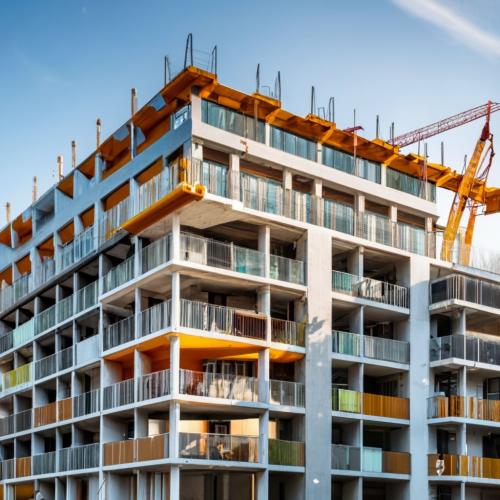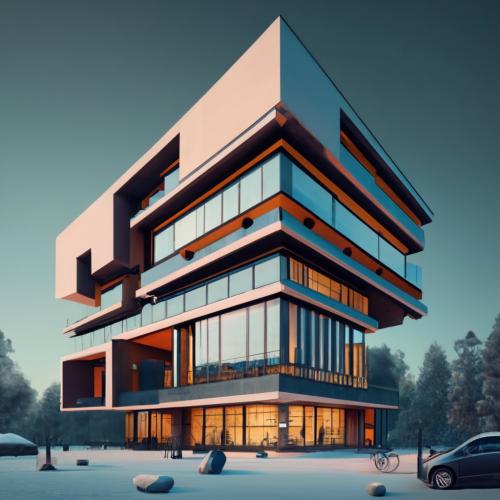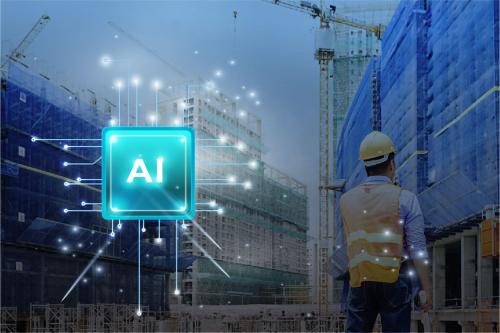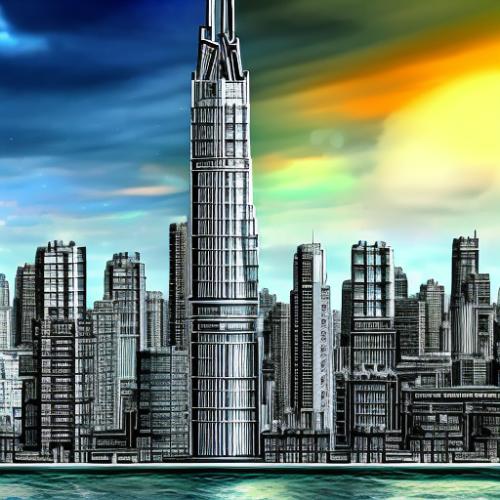The Rise of Green Construction: How Precast Detailing is Adapting!

Green construction has become a buzzword in the construction industry. As society becomes more aware of the impact of our actions on the environment, sustainable construction practices have become a priority. Precast detailing, an integral part of the construction, is adapting to these sustainable practices to create a greener future.
Precast detailing is the process of creating detailed design plans for prefabricated concrete elements that are produced off-site and transported to the construction site for installation. Precast detailing plays a critical role in construction projects, ensuring that the elements are produced accurately and efficiently. As construction practices shift towards sustainability, precast detailing is adapting to these changes to meet the needs of the industry.
The Rise of Green Construction
The construction industry is facing a major shift towards sustainable and eco-friendly practices. Precast detailing, in particular, is adapting to incorporate these changes in various ways.
Here are some of the key developments in the field:
1. Use of Recycled Materials
In order to reduce environmental impact and promote sustainability, precast detailing incorporates the use of recycled materials. According to a Precast/Prestressed Concrete Institute (PCI) study, precast concrete can be created using up to 100% recycled aggregate. This not only reduces waste but also helps to conserve natural resources. The use of recycled materials is becoming increasingly important in precast construction to reduce environmental impact and promote sustainability.
2. Energy-Efficient Building Systems
Another important sustainable design feature in precast construction is the use of energy-efficient building systems. Precast concrete has a high thermal mass, which means that it can absorb and hold heat, helping to regulate indoor temperatures. This reduces energy consumption, improves indoor air quality, and reduces the overall environmental impact.
3. Improved Waste Management
Practices In addition to the use of recycled materials, precast detailing is also incorporating improved waste management practices. Precast concrete can be fabricated off-site, which reduces waste and minimizes the amount of labor required on the construction site. Furthermore, precast detailing can be more precise and accurate, reducing the need for excess material that would otherwise go to waste.
4. Building Information Modeling (BIM)
In addition to sustainable design features, precast detailing is also adopting digital tools and workflows to improve communication and collaboration. Building information modeling (BIM) is becoming increasingly common in precast detailing, allowing project stakeholders to visualize the design and identify potential issues before construction begins. This can lead to more efficient workflows and cost-effective construction projects.
Advancements in Precast Detailing for Eco-Friendliness
As the construction industry continues to prioritize sustainability and eco-friendliness, precast detailing is evolving to adapt to these changing demands.
Here are some of the key advancements in precast detailing for green construction:
1. Use of Recycled Materials: The use of recycled materials in precast detailing is becoming more prevalent as sustainable construction practices gain popularity. Precast concrete manufacturers are now incorporating recycled materials such as glass, metal, and plastic into their products. This reduces the environmental impact of construction and minimizes waste.
2. Energy-Efficient Building Systems: Designing buildings with energy-efficient systems has become a top priority in green construction. Precast detailing is now incorporating features such as insulated sandwich panels, thermal mass walls, and shading devices, which help to reduce energy consumption and promote sustainability.
3. Improved Waste Management Practices: In green construction, waste management is a critical element of sustainability. Precast detailing companies are now implementing better waste management practices at precast plants, reducing the amount of waste produced and minimizing environmental impact.
4. Building Information Modeling (BIM): BIM is now widely used in precast detailing for green construction. This technology allows designers and engineers to create 3D models of buildings, enabling them to simulate and optimize sustainable design features like natural ventilation, daylighting, and thermal performance. This results in more energy-efficient designs and reduced environmental impact.
5. Use of Digital Design Tools: In addition to BIM, precast detailing is also utilizing other digital design tools, such as computer-aided design (CAD) software and virtual reality modeling. These tools enable designers, engineers, and project stakeholders to collaborate more efficiently, resulting in more cost-effective and sustainable precast construction projects.
The Role of Precast Detailing in Green Construction
The precast detailing process plays a significant role in achieving sustainable construction practices. This section will explore the Importance of precast detailing in green construction, the advantages of using precast concrete, and how the precast detailing process impacts sustainable construction.
A. Importance of precast detailing in green construction
Precast detailing is crucial in green construction because it allows for the accurate and efficient production of prefabricated concrete elements. Precast concrete can be manufactured off-site in a controlled environment, minimizing waste and reducing the environmental impact of on-site construction. Additionally, precast detailing ensures that the elements are produced to the highest standards of quality, reducing the need for replacements and repairs in the future. The use of precast concrete in construction projects also reduces the overall energy consumption of a building, as precast concrete has excellent thermal insulation properties.
B. Advantages of using precast concrete in green construction
Using precast concrete in green construction has several advantages:
Precast concrete is a sustainable material that can be manufactured with minimal waste and energy consumption.
It has excellent durability and can withstand harsh weather conditions, reducing the need for frequent maintenance and repair.
Precast concrete has high thermal insulation properties, reducing the energy required to heat and cool a building.
Precast concrete is a versatile material that can be used in various construction applications, making it an ideal choice for green construction projects.
C. Overview of the precast detailing process and its impact on green construction
The precast detailing process involves the creation of detailed design plans for prefabricated concrete elements that are produced off-site and transported to the construction site for installation. The process involves a high level of accuracy and attention to detail to ensure that the elements are produced to the required specifications. The use of digital tools, such as Building Information Modeling (BIM), has made precast detailing more efficient and accurate, reducing waste and improving the overall sustainability of the construction project.
Future of Green Construction and Precast Detailing
As the construction industry continues to prioritize sustainable practices, the future of green construction and precast detailing is evolving. This section will explore emerging trends in green construction and their impact on precast detailing, as well as the challenges and opportunities for precast detailing in the future of green construction.
Green construction is a rapidly growing trend in the construction industry as the world becomes more aware of the need to protect the environment. This trend is driven by the need to reduce carbon emissions, improve energy efficiency, and promote sustainability. As green construction practices continue to evolve, the use of precast concrete is becoming increasingly important due to its versatility and durability.
Here are some of the emerging trends in green construction and their impact on precast detailing:
Use of sustainable materials: One of the emerging trends in green construction is the use of sustainable materials, such as recycled content and low-carbon cement, in precast concrete. This trend is driven by the need to reduce the carbon footprint of construction projects and promote sustainability. The use of sustainable materials in precast concrete can reduce the environmental impact of the construction industry and improve the sustainability of buildings.
Incorporation of renewable energy sources: Another emerging trend in green construction is the incorporation of renewable energy sources into buildings. This trend has implications for precast detailing as it may require the integration of elements such as solar panels and wind turbines into precast concrete elements. Precast detailing will need to accommodate the placement and support of these elements, as well as ensure their compatibility with the building envelope.
Use of green roofs and walls: Green roofs and walls are becoming increasingly popular in green construction due to their ability to improve energy efficiency, reduce stormwater runoff, and provide a natural aesthetic. The installation of these elements requires special considerations in precast detailing to ensure proper installation and integration with the building envelope. Precast detailing will need to accommodate the placement of these elements and ensure their compatibility with the overall design of the building.
Use of digital tools: Digital tools, such as BIM, are becoming increasingly important in precast detailing for green construction projects. These tools can help streamline the precast detailing process and improve accuracy, reducing waste and improving the overall sustainability of the construction project. The use of digital tools can also improve collaboration and communication between different stakeholders in the construction process, including architects, engineers, contractors, and manufacturers.
In conclusion, the rise of green construction and the increasing focus on sustainability has had a significant impact on precast detailing. The industry is adapting by incorporating more sustainable design elements and utilizing digital technology to improve collaboration and communication. As a result, precast construction projects are becoming more efficient, cost-effective, and environmentally friendly. If you’re interested in learning more about how precast detailing can help promote sustainability in construction, make sure to contact us today. Let’s work together to create a better future for our planet.








Comments